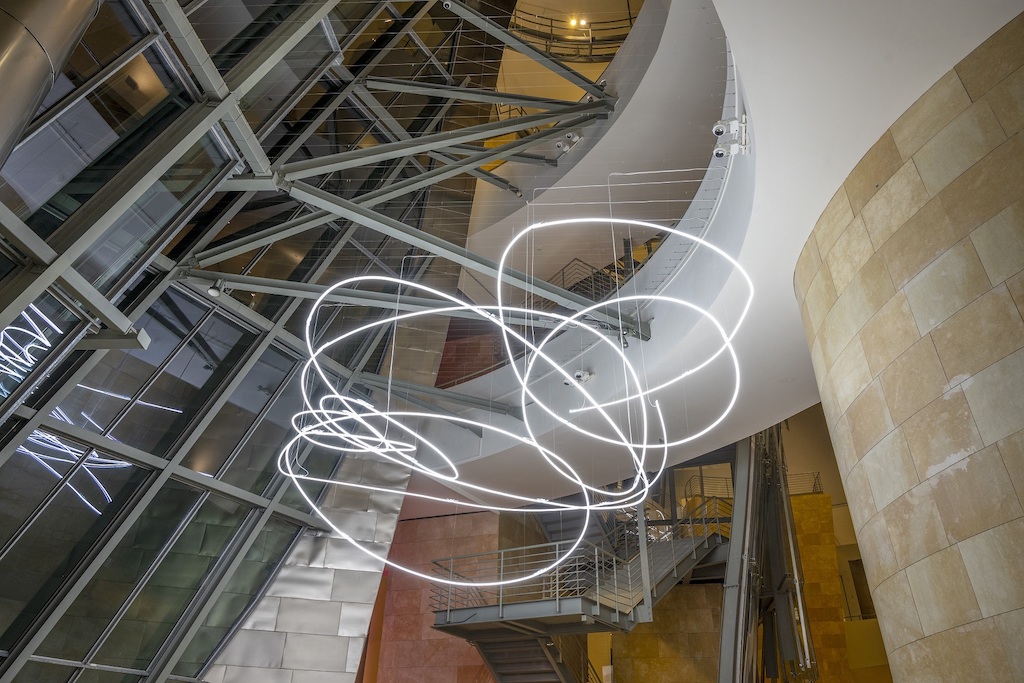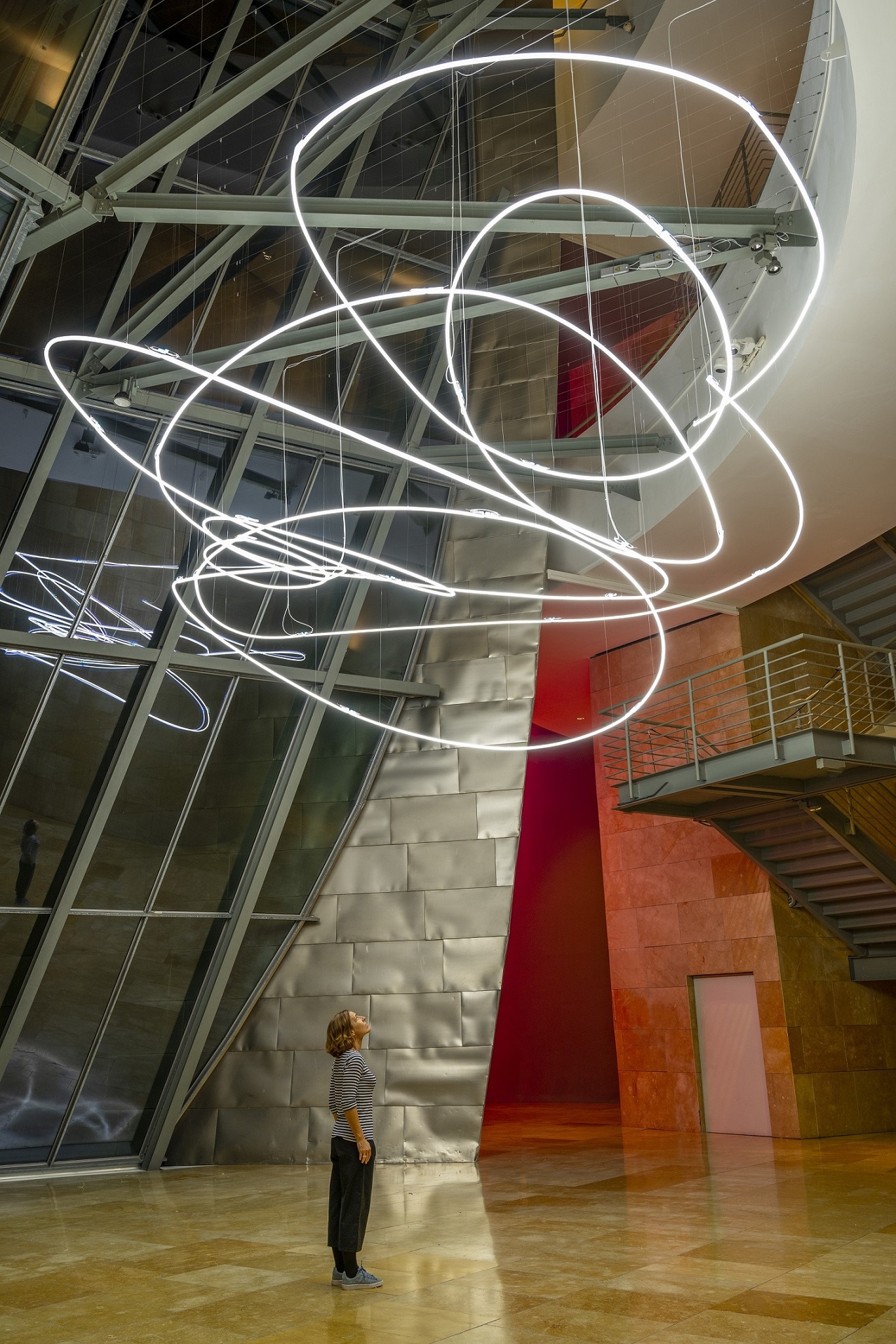The Guggenheim Museum Bilbao installs an impressive work by Lucio Fontana

The Guggenheim Museum Bilbao is unveiling the installation of a spectacular work by Lucio Fontana in its Atrium, which Museum visitors will be able to enjoy over the next three years.

Neon Structure for the Ninth Milan Triennial (Struttura al neon per la IX Triennale di Milano), created by the great Italian-Argentine artist in 1951, is a piece that can simultaneously be considered a drawing, a sculpture, a light design object, and an expressive gesture frozen midair. The privilege of exhibiting it stems from the exceptional partnership between the Fondazione Lucio Fontana in Milan and the Guggenheim Museum Bilbao.

The complexity of this work, which was part of the 2019 exhibition Lucio Fontana. On the Threshold, engages with an exceptional interlocutor: the building designed by Frank Gehry, whose sketches scrawled on paper are reminiscent of Fontana’s spatial arabesques. Because of its luminosity and sheer size, the impressive neon plays with perspective and distance, intensifying viewers’ experience of the architecture, which is perceptible both inside and outside the Museum.

Throughout his career, Lucio Fontana (b. 1899, Rosario, Argentina – d. 1968, Varese, Italy) turned space into a topic of constant inquiry and meditation, and he addressed it in multiple contexts using a wide range of materials. After ushering in the Spatialist movement and returning to Italy in 1947, Fontana gradually veered towards radical abstraction and experimentation. A pioneer in his use of empty space as a generator and unique component of artworks, Fontana was a key figure in the development of multiple avant-garde groups—including the international group Zero—as well as serving as a touchstone for notable artists from subsequent generations, including Yves Klein, Jorge Oteiza and Jesús Rafael Soto. Despite being world-renowned for his blazing monochrome, cut, and punctured canvases, Fontana always considered himself a sculptor and approached each piece with a complete experience of color and gesture, time, depth, volume, material, and light.
In the words of the president of the Fondazione Lucio Fontana, Paolo Laurini, “The neon created for the Ninth Milan Triennial in 1951 can easily be considered one of the most representative and iconic works of Lucio Fontana, a perfect example of his groundbreaking creativity.” In Laurini’s opinion, this work’s presentation in the Atrium of the Guggenheim Museum Bilbao is exceptional because, “the artist always had a special relationship with architects, whose spatial sensibility he felt an affinity for. The amazing naturalness with which Fontana’s installation in Bilbao engages in dialogue with Frank Gehry’s fascinating architecture—offering provocative and novel visions and perspectives—leads us to think that this work would find an ideal echo here.”
Neon Structure for the Ninth Milan Triennial is one of the most striking expressions of the convergence of art and technology in the 20th century. Made of a surprising material for the aesthetic criteria of its day, the piece arose from a specific commission for the vestibule of the 1951 Milan Triennial. With his spatial neon drawing, Fontana may have been responding to the famous “light drawings” that Pablo Picasso made in conjunction with the photographer Gjon Mili in 1950. In contrast to the use of electric light as an “exotic” material in the traditional arts, with its hundreds of meters of twisted, chaotic neon, Fontana suggested a tour de force of the industry’s capacity back in the day. He thus put into practice one of the proclamations of the Spatialist manifesto of 1948: “With the resources of modern technology, we shall make appear in the sky artificial forms / amazing rainbows / luminous posters.” At the same time, its sinuosity unexpectedly joined the Baroque aesthetic, which he had so fervently admired since his youth, with the technology program of the space age.